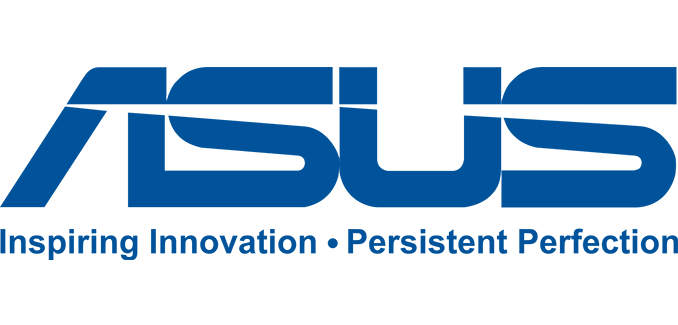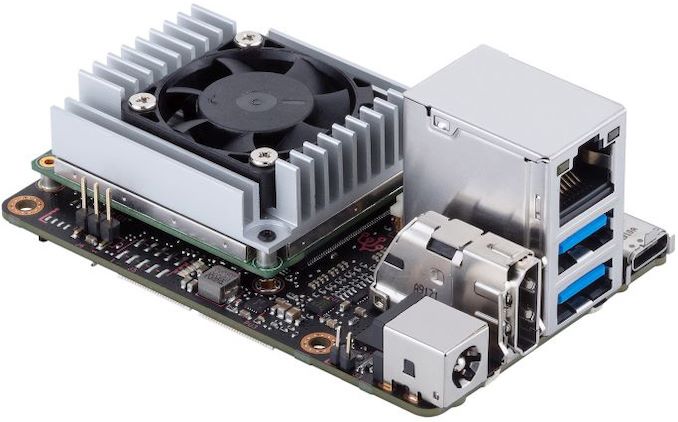ASUS & Google Team Up for ‘Tinker Board’ AI-Focused Credit-Card Sized Computers
by Anton Shilov on November 12, 2019 5:00 PM EST- Posted in
- AI
- Asus
- Tinker Board

ASUS and Google have joined forces to develop a new project that the companies are calling ‘Tinker Board’ single board computers (SBCs). With a footprint not much larger than a credit card, the systems are designed for building small systems to work on AI inference applications like image recognition.
The systems in question are the Tinker Edge T and Tinker Edge R. The former is based on the NXP i.MX8M with an Edge TPU chip that accelerates TensorFlow Lite, whereas the Tinker Edge R is powered by the Rockchip RK3399 Pro processor with an NPU for 4K machine learning. The SBCs officially support Android and Debian operating system, though nothing prevents them from running Linux or other OSes.
Both Tinker Edge T and Tinker Edge R computers feature active cooling as well as mainstream I/O interfaces, including GbE, USB 3.0, and HDMI.
ASUS and Google position their Tinker Edge T and Tinker Edge R for various edge AI applications that have to be compact and very energy efficient.
ASUS plans to demonstrate its Tinker Edge T and Tinker Edge R SBCs at the IoT Technology 2019 conference in Japan, which kicks off on November 20. Pricing of the devices remains to be seen, but it will depend on volumes and other factors.
Related Reading:












38 Comments
View All Comments
Kevin G - Tuesday, November 12, 2019 - link
Does the Tinker Edge have AVB enabled on its Ethernet port? If so, that opens up some interesting audio and DSP possibilities.ToTTenTranz - Tuesday, November 12, 2019 - link
What's "4K machine learning"?mooninite - Tuesday, November 12, 2019 - link
It's better than 2K machine learning? Yes, the "machine learning" marketing jargon is way out of control.nandnandnand - Tuesday, November 12, 2019 - link
Instead of 8-bit precision, it uses 4096-bit precision.skavi - Wednesday, November 13, 2019 - link
wish i could upvote this.rahvin - Wednesday, November 13, 2019 - link
I thought it meant the AI chip had learned to watch 4K video.mode_13h - Friday, November 15, 2019 - link
Well, the RK3399 can certainly decode 4k video, but there's no way an edge TPU can run particularly interesting video analytics at that resolution. Not to mention the amount of RAM you'd need.So, it seems disingenuous to claim that this thing is in any way suitable for "4k machine learning". Not in realtime, at least.
Demios - Tuesday, November 12, 2019 - link
Probably what it sounds like, unless you're just being pedantic.Wrong_again - Tuesday, November 12, 2019 - link
These look pricey because they're fancy.I may not have to prepare a spot next to my dormant raspberry pi's.
nandnandnand - Tuesday, November 12, 2019 - link
I was wondering about what future Raspberry Pis could look like in terms of ports. I guess RasPi 5 will look the same, maybe replace USB 2.0 with all USB 3.0, but there could be board changes after that. For example, could a stack of three USB Type-C ports take up the same amount of vertical space as a stack of two Type-A ports, allowing 5 or 6 ports in place of 4?In this case (Tinker Edge R), the Type-C port has been given all the space that a Type-A would have taken up.
Other than that, it looks nice and I want to see the pricing and full specs before I dismiss it.